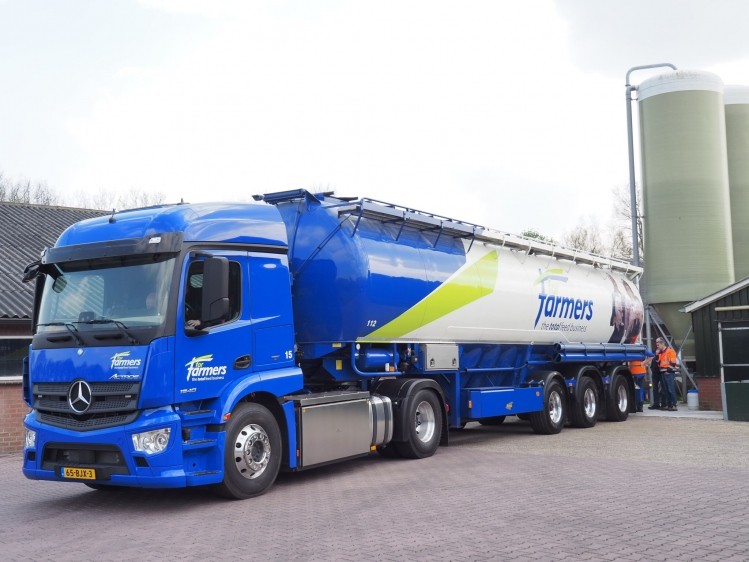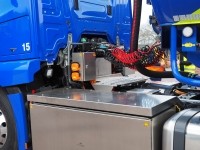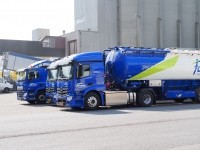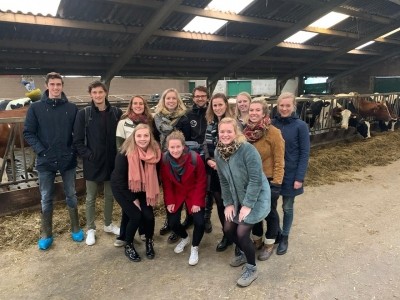ForFarmers testing electric unloading of compound feed in the Netherlands

It claims to be the first company in the European feed sector to investigate the possibilities of electric unloading of compound feed at livestock production farms.
“We have sustainability goals at our company and, as such, we are always looking to see how we can reduce, for example, fuel consumption in our trucks. We recognized that 25% of the volume of the fuel consumption in bulk vehicles was linked to the blower for unloading of compound feed, so we started looking at how we could reduce that consumption,” said Jeroen Franck, logistics manager at ForFarmers in the Netherlands.
Modification
The unloading mechanism of bulk trucks, filled with a maximum of 32 tons of feed, is conventionally driven by the diesel engine of the truck. ForFarmers is now testing a special new bulk truck in its fleet that is equipped with an electric pump to control the unloading mechanism.
With the new test truck, the drive of the unloading mechanism is no longer provided by the engine, but by electricity stored in batteries. This means that the engine of the truck does not have to turn anymore during unloading. In addition, the energy released during braking and rolling out of the truck is stored for later use.
Potential savings
“The pilot testing phase [which is taking place only in the Netherlands] will last at least half a year. We expect to reduce fuel consumption by around 60 liters of diesel per truck every day, which is 300 liters of diesel per week, and 18,000 liters per year. Every liter of diesel contains 2.6kg of CO2, so, potentially, that would be a significant reduction in carbon dioxide emissions,” said Franck.
The feed manufacturer worked with tank builder, Welgro, truck supplier, Wensink, and truck builder, Wierda Hybrid on this initiative.
“We collaborated with those suppliers on the prototype, it took one year to develop and six months to build it,” Franck told us.
However, it is important that the innovative method of unloading also works in practice, said the logistics manger. “We have to look at the life of the batteries, how we charge them, etc.”
If the pilot testing phase shows a substantial saving of regular fuel, he said the company could consider investing in more of these type of bulk trucks.
With less wear and tear on the new type of bulk trucks as a result of their electric load discharging capacity, ForFarmers could gain an extra two years in terms of the lifetime of a vehicle, he noted.
The company's total fleet of compound feed delivery trucks includes 250 bulk trucks, of which 55 are in the Netherlands.
When pressed on the potential cost outlay required for this new type of bulk truck, Franck said sustainability goals take priority over financial returns in this initiative. “You always have to find the balance regarding cost, CO2 reduction, the whole picture of how it fits into your sustainability goals and KPIs.”









